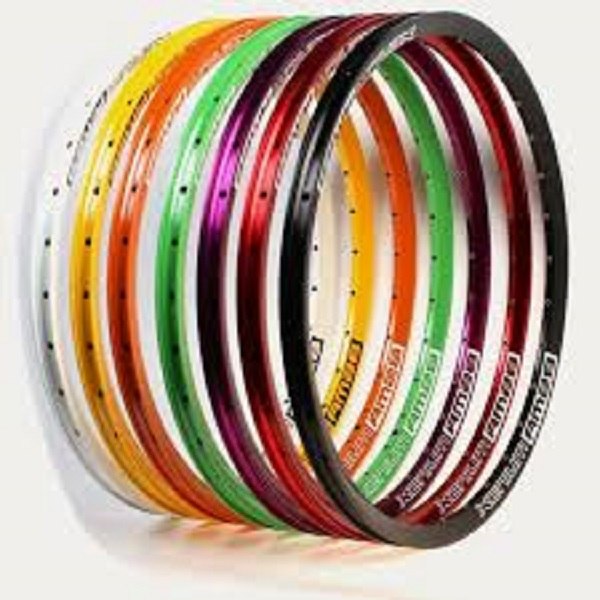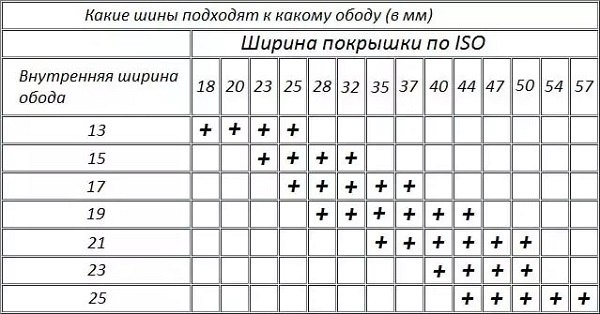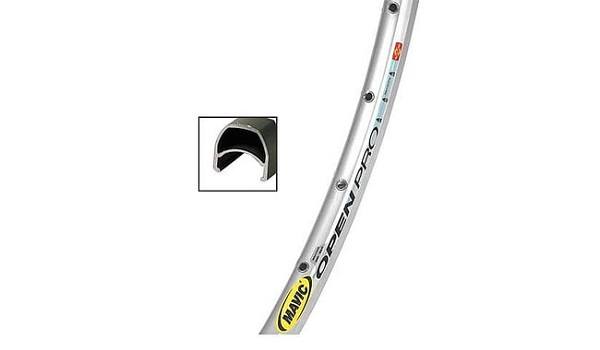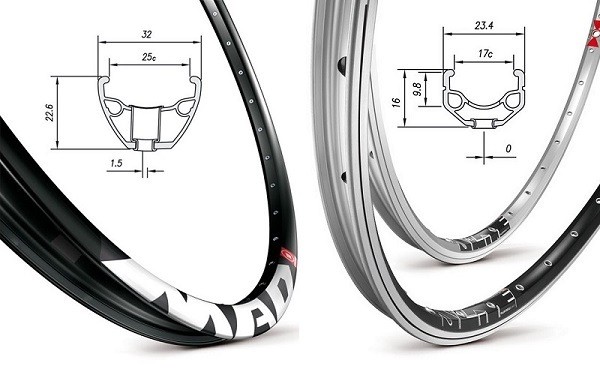Often when buying a bike, the rims are neglected. And it is these elements of the bike take the lion’s share of the loads during the ride. They withstand the weight of the cyclist, overcoming bumps, as well as experiencing static loads in the form of constant tension of the spokes and air pressure in the chamber. Therefore, the rims for bicycles – a very important element of the design, which should not be neglected.
General recommendations
The hitch with the choice of these or those models occurs when it is necessary to replace this element directly. When giving preference to one or another product, it is necessary to take into account the specifics of the use of the bicycle and the manner of riding it. The main requirement is that the rim should be strong and lightweight.
If everything is clear with the strength of the rims, why should their design be light? During acceleration, the physical efforts of the cyclist are aimed at increasing the speed of rotation of the wheels, that is, their spinning. From this we can conclude: the rim of a bicycle wheel is an important element that is constantly under load, which means that the choice of this element should be taken very seriously. What parameters are worth paying attention to?
Method of manufacture
Rims are distinguished depending on the method of their production. First, the finished raw material undergoes a stage of extrusion, after which the blanks in hot form are twisted into a ring and connected in one of two ways:
- Pinning. This is a budget-friendly but fairly durable method. The joining seam may diverge, but this point has no effect on the spoke process.
- Welding method. More expensive and costly, which, accordingly, is reflected in the cost of products. At the same time, they are characterized by maximum strength and endurance.
After joining, the rims are subjected to additional processing and careful inspection. Only after passing all stages, the products go on sale.
Dimensions
To determine the fitment size, the following designations are used:
- ISO measurement. The parameter corresponds to the actual size of the rim under the tire (measured in mm). The value is indicated on the tire, thus avoiding confusion when buying.
- Measurement in inches. A less accurate designation because it characterizes the size of the rim on the bike by the outer ring.
- French measurement. Reflects the outer value of the tire diameter (in mm), taking into account the thickness of the tire (letter designation). Essentially, the measurement consists of a letter designation and a numerical designation.
For example, ISO is 585 mm; in inches, 26″; French is 650B. Children’s bicycles use 305 mm, 406 mm and 355 mm. The same dimensions correspond to the folding models. Teenage bikes already need rims of 507 mm. The most common models are 559 and 622 mm.
Rim profile
In addition to size, there are two other parameters to consider when choosing are height and width. Width refers to the presence of 1, 2 or 3 walls. The height characterizes the resistance of the products to deformation from bumps on the road, side impacts and other troubles.
Number of spokes
One misconception is the number of spokes: the more spokes, the stronger the wheel. This only works if the weight of the cyclist exceeds 100 kg. The number of spokes depends on the style of riding. For example, the urban models have from 36 to 40 spokes, the mountain ones – from 32 to 36, the road bikes – from 24 to 32.
Material of manufacture
Throughout the history of the bicycle industry, manufacturers have tried to find a balance between cost and quality. At one time, rims were even made of wood. Now they are used:
- Aluminum alloy. The most common option, which combines a democratic cost, sufficient strength and weight.
- Maxtal. This is Mavic’s proprietary alloy, featuring high stiffness. Such a rim is really difficult to bend, but it is subject to such a defect as “fatigue” of the metal.
- Steel. Products made of this material are characterized by a very solid weight, so they are rare.
- Carbon. This material is used on expensive and modern bikes, which take part in road races and other competitions.
Most often aluminum alloy is used. It provides a light weight product and its strength. At the same time, aluminum rims are inexpensive, which is another advantage.
Pistons and anodizing
Pistons are a method of increasing strength. To this end, the spokes are inserted into the pistons, which allows the load to be distributed evenly over the surface. This is how the service life is increased.
Anodizing is another method used to increase the strength of a mid-priced rim or higher. In the process, the surface is coated with a protective film of oxide composition, which gives the product a specific hue and makes it much stronger.
Number of walls.
The very first bicycle rims had only one wall. With the development of technology and the bicycle industry, their number increased to 2 and 3:
- Single-walled. Such products are designed for urban, children’s or recreational models, designed for small loads. Budget category.
- Double rims on a bicycle. They consist of a main wall and an additional wall. Products have great durability and insignificant weight. Withstands shocks, put on mountain models of medium price category.
- Triple products. The frame has three walls, which means that the construction is characterized by increased strength and low likelihood of “figure of eight” formation.
Triple-walled rims are much heavier and more complex than single-walled and double-walled products. They are now practically uncommon. They were originally produced to prevent the sides of the profile from being squeezed by rim brakes. However, with the introduction and widespread use of disc brakes, this was no longer necessary, so triple rims are extremely rare nowadays.
Characteristic features of rims
When choosing the right rims, you should pay attention to the length and width of the products. If we have already talked about the units of length, now it’s time for the next parameter.
Width .
The length of the rims determines the degree of comfort when riding a bicycle. But the determining factor is width. The effort expended, the rider’s weight, the shock absorption properties when doing tricks, etc. – it all depends on the width.
Finding the right rim for a particular tire is not easy – you need to consider the anticipated loads and operating conditions. Certain doubts are caused by the classification of products according to the number of walls, dimensions and other factors. Even minor differences in parameters will contribute to the wear of the tires and, consequently, reduce the service life of the bicycle frame. An almost standard system for calculating the width for a particular riding style has been developed. It is denoted in millimeters. Possible variants:
- up to 15 mm – for trekking, highway and high speed;
- 17 mm – installed on hybrids, models for the Cross-country—what-it-is–nuances (in this case the hardness of the alloy is very important);
- 19 mm – standard for mountain models;
- 21 mm – cycling tourism, performing basic tricks;
- 23 mm – for extreme riding.
The width of the rims, as well as the length – the parameters that should be guided, focusing on the manner of riding and load.
Tips for novice riders
Much depends on the budget and the purpose of the rims. If you – the supporter of leisurely cycling on urban landscapes, feel free to take a double model of aluminum alloy. If you are fond of extreme riding and often encounter damage to the frame of the bike, it makes sense to buy a high-quality pistolized or anodized products. True, another factor will appear here – the cost.
Conclusion
Now you know how important an element of the bicycle are the rims. This element is constantly exposed to loads, so when choosing should take into account the material of manufacture, the number of walls and other parameters.











Great post! I never knew there was so much to consider when choosing the right bike rim. The tips you provided are really helpful and it’s nice to have all this information in one place. Thanks for sharing your knowledge on this topic!
This is an incredibly helpful post! I had no idea what bicycle rims were, but now i know. The tips for choosing the right one are extremely useful too — thank you so much for sharing this valuable knowledge!